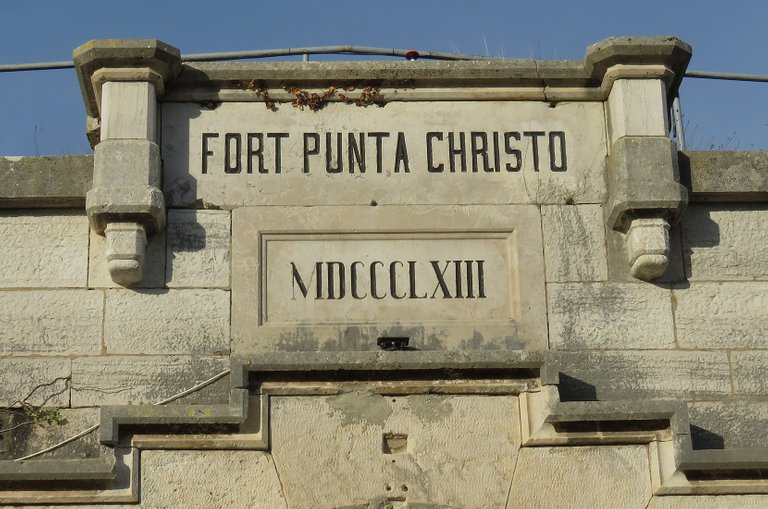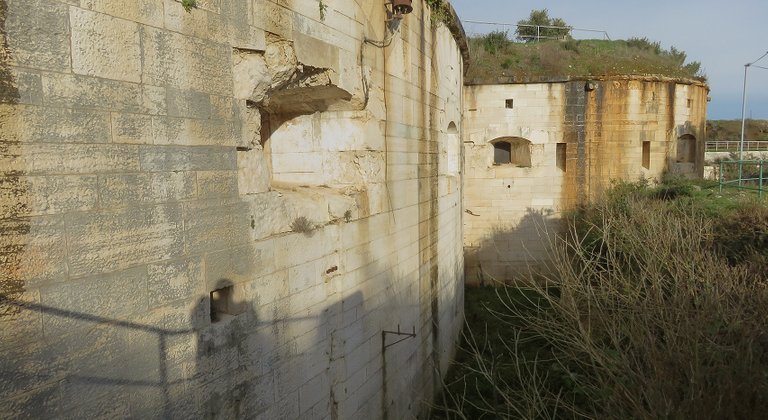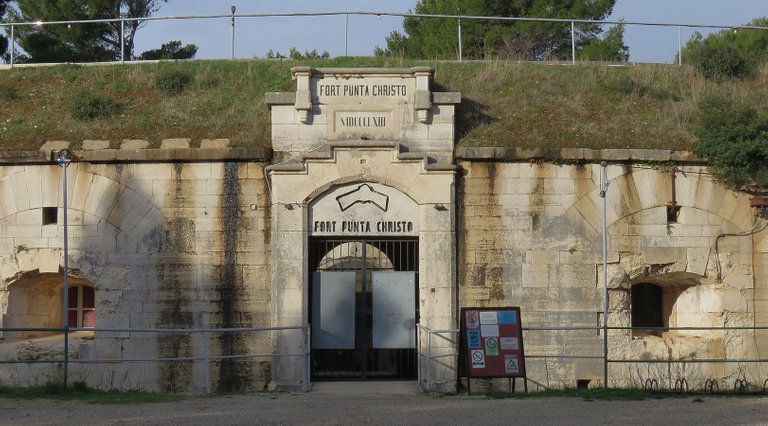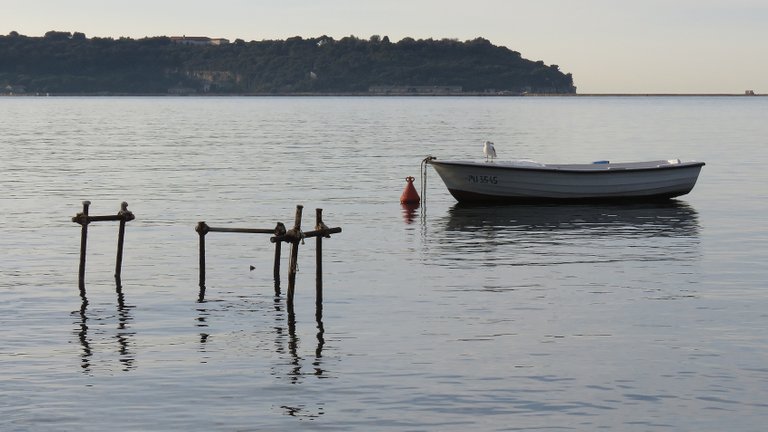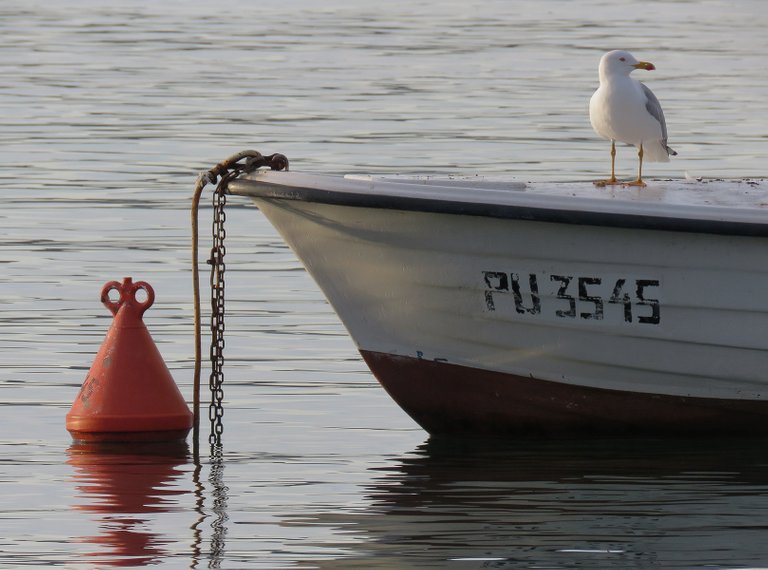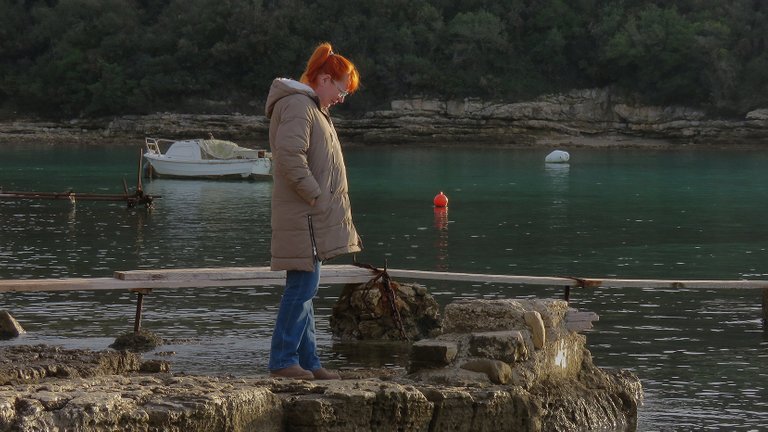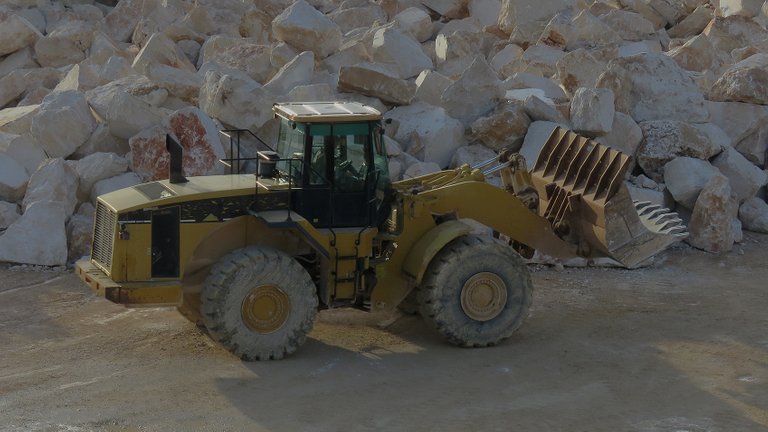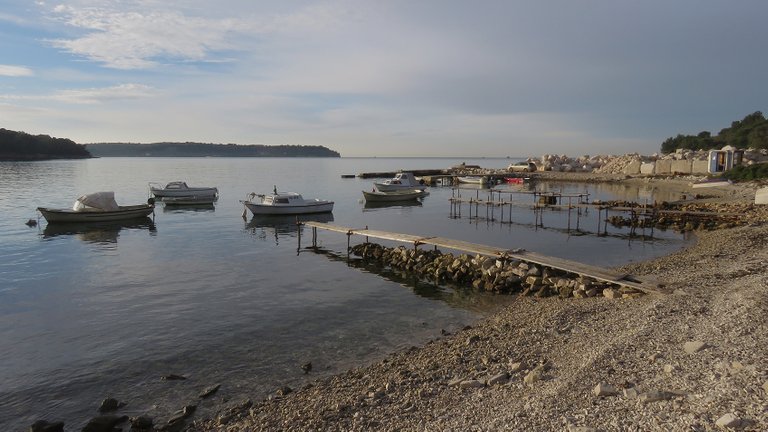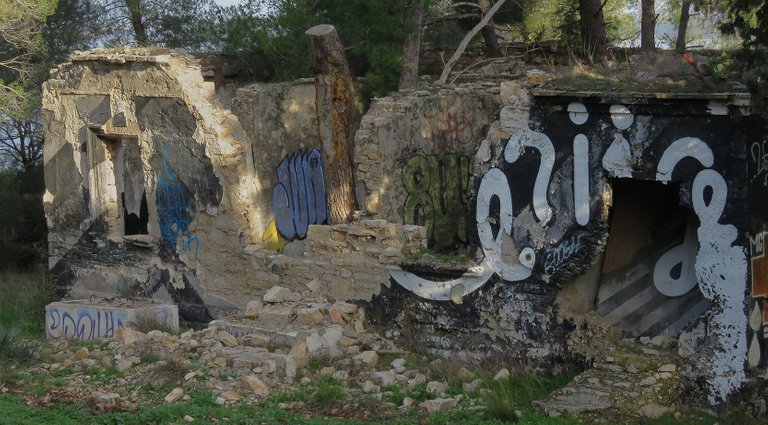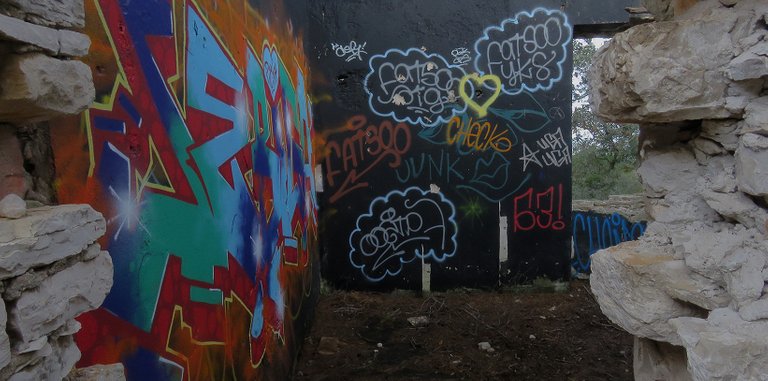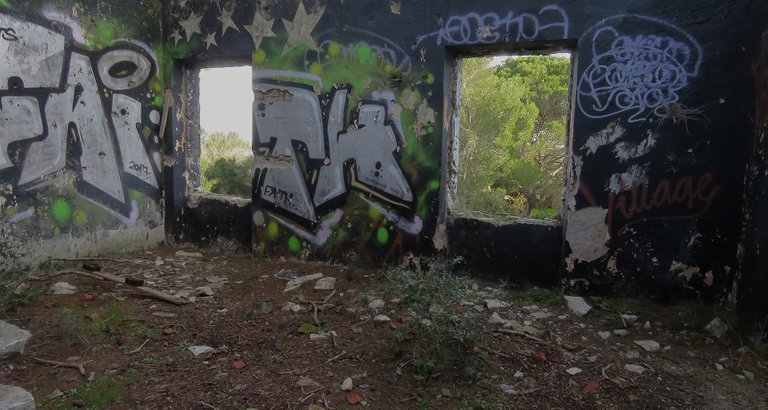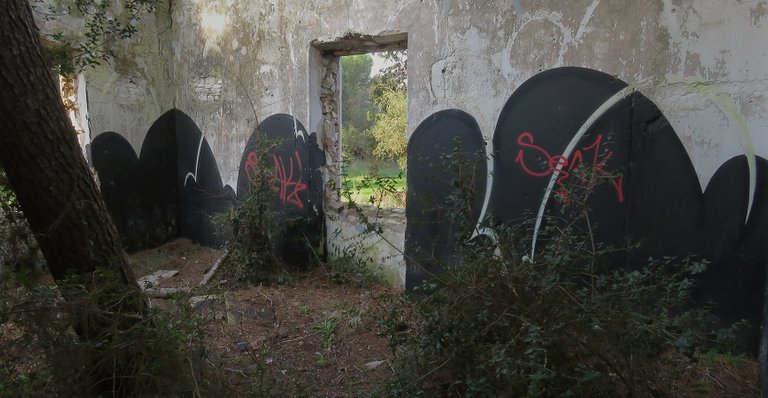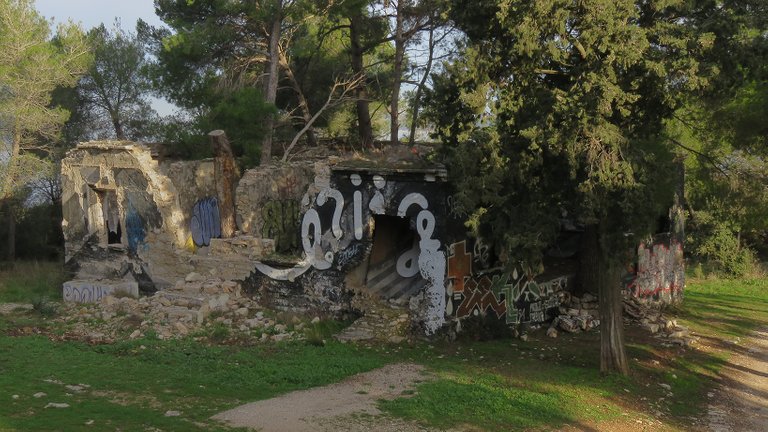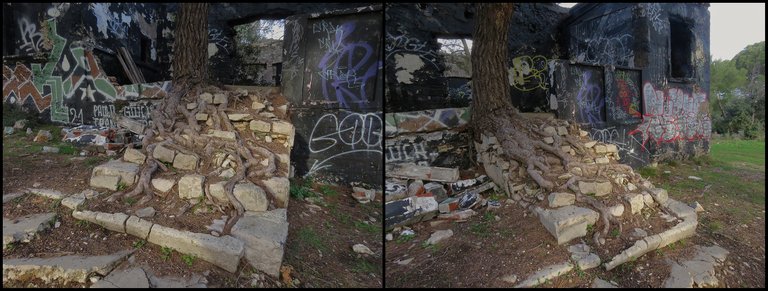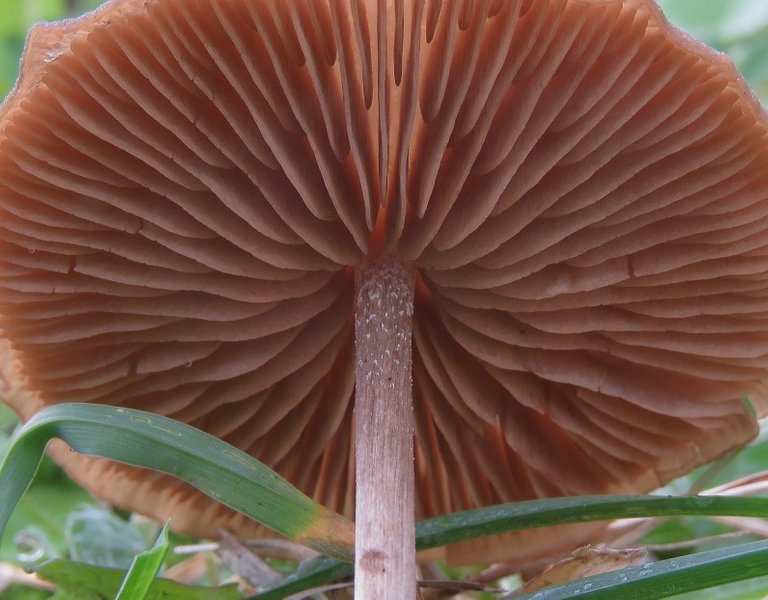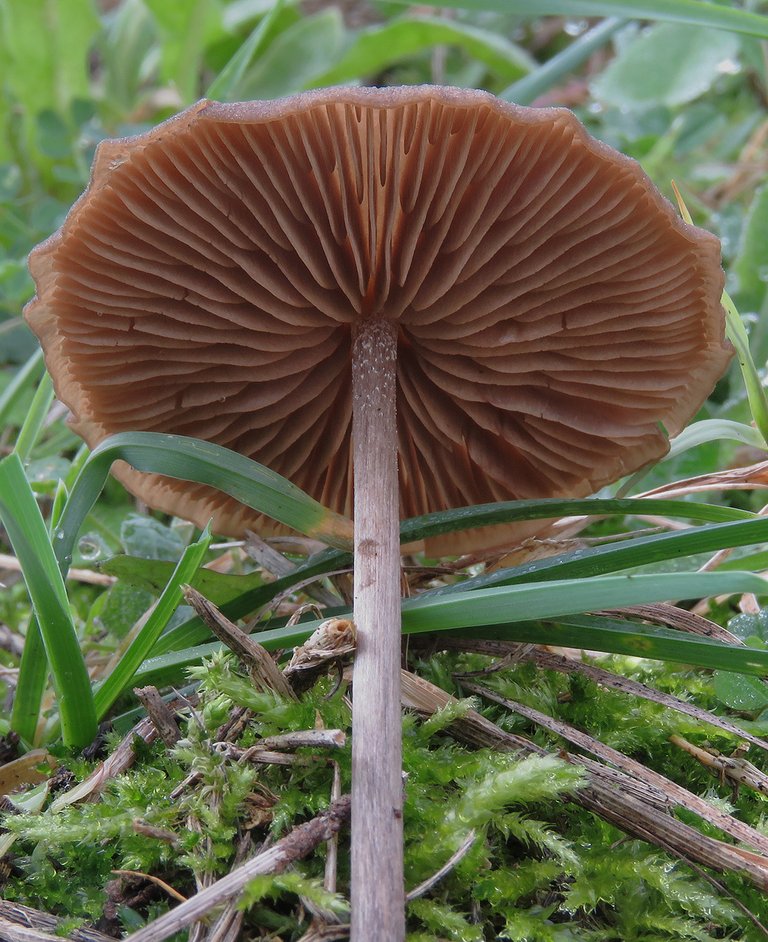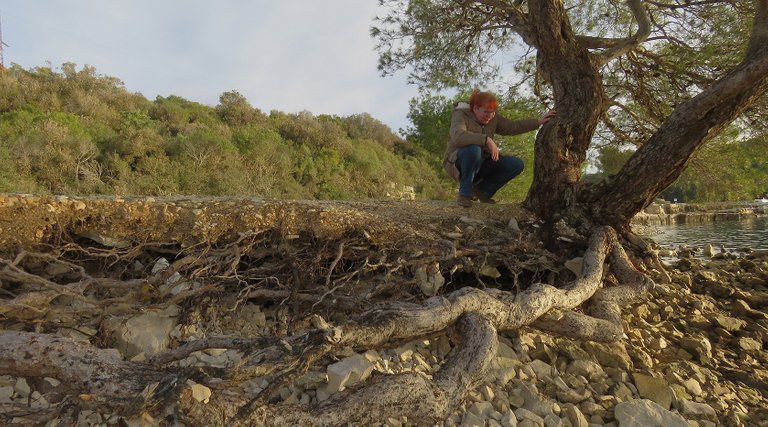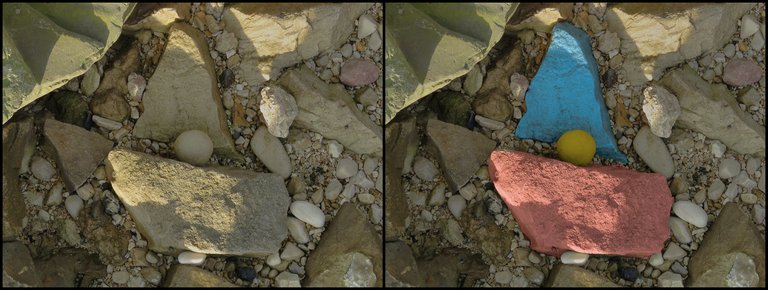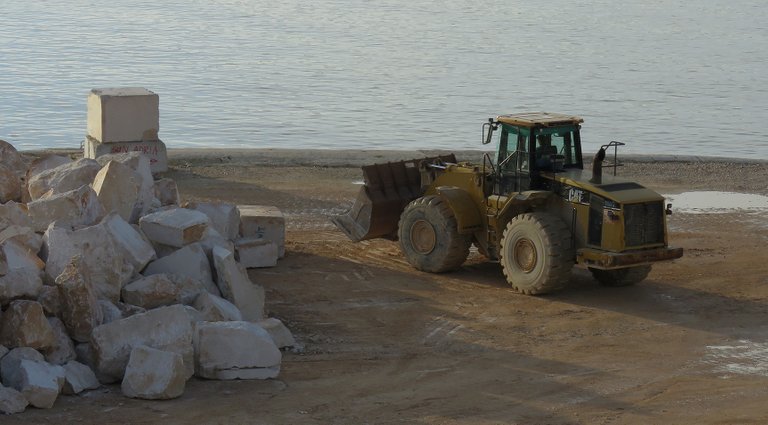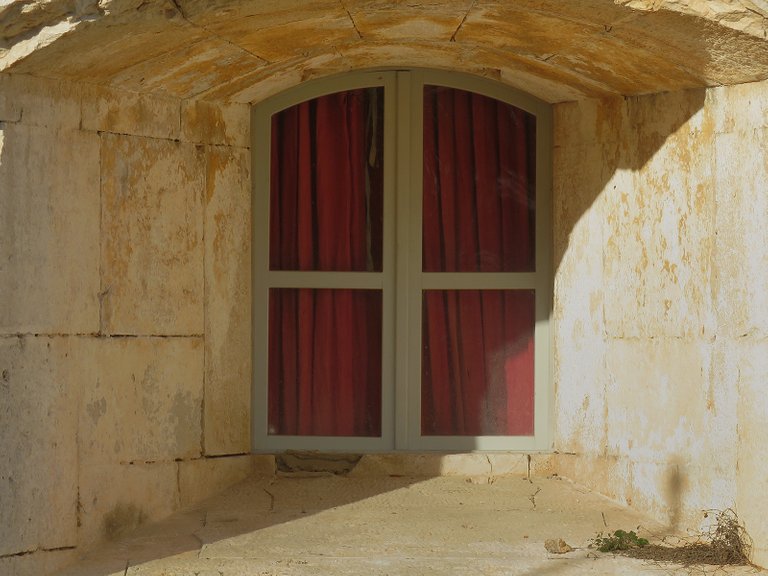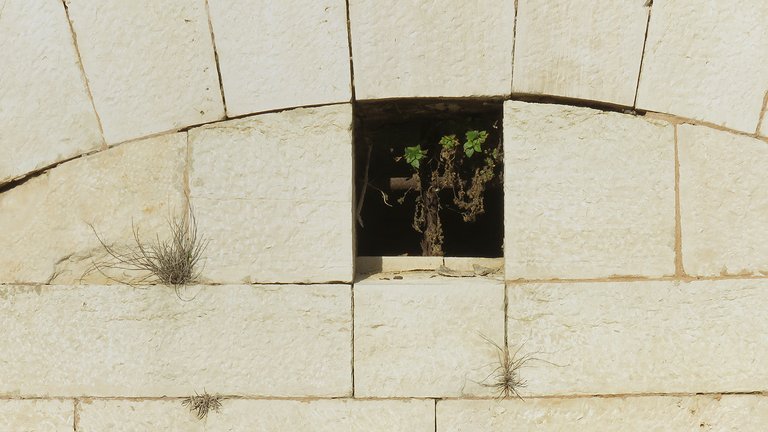More or less a month ago, on the 13th of January, I spent a couple of hours rambling around the small harbor on the coast about a kilometer or two from the village of Stinjan and around the old fort situated nearby, on the hill above the harbor.
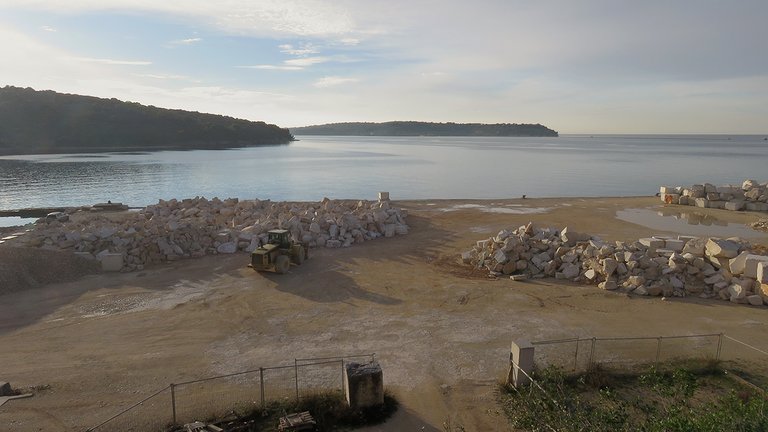
All this stuff is very close to the city of Pula, practically connected to the coastal suburbs. From my hometown, I had to drive about fifteen kilometers to get there.
The Roman numerals engraved in the stone above the main gate of the Fort Punta Christo show the year when the fortification was finished, 1863.
In those times Pula, the biggest city, and Istra - the whole peninsula, were a strategically important part of the Austrian Empire that will soon, in 1867 become a dual monarchy, the Austro-Hungarian Empire.
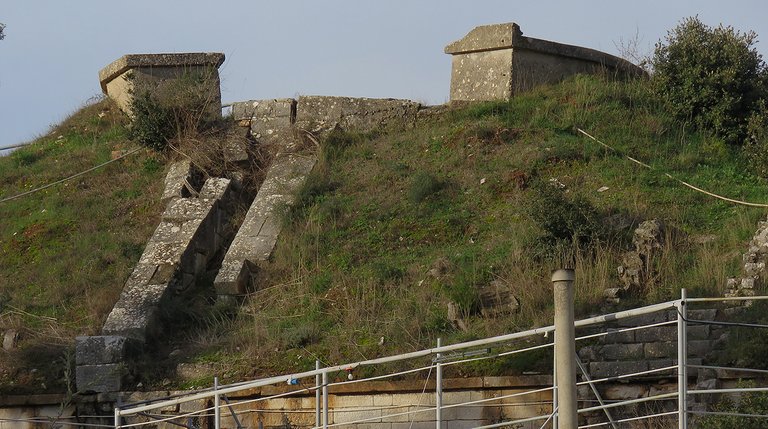
Despite many dramatic changes in the time frame from 1863 to 1982, changes that include the collapse of the empire after World War I and the creation of the communist state after World War II, the massive fort was continuously used as military quarters for different armies of different states that controlled the territory.
It was an armory of the Yugoslav army from 1982 to 1991, and then, from 1991 to 1995 the fort was again used as military quarters, of the Croatian army this time. In 1995 the place was abandoned. Since 2005 ...
... Fort Punta Christo is used for events and activities that are the polar opposite of the military stuff. Concerts. Festivals. Various art projects and some contemporary hippy stuff. The gate is closed in winter when there's nothing going g on, so I could only take a look through the bars. Maybe I'll visit this place in the summer again, and then publish a post about its interior. The following photograph ...
... was taken in the harbor a hundred or two hundred meters downhill from the fortress.
Here I zoomed in on the scene so you can take a good look at the seagull on the prow ...
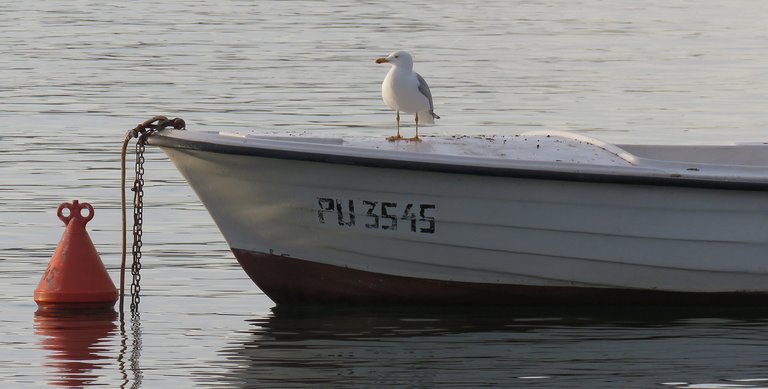
... the seagull that looks like the captain of the small boat on which is resting.

Here you can see more of the scenery ...
... and a friend that was there with me. In the following photograph ...

... the focus is on the stones in the inlet.
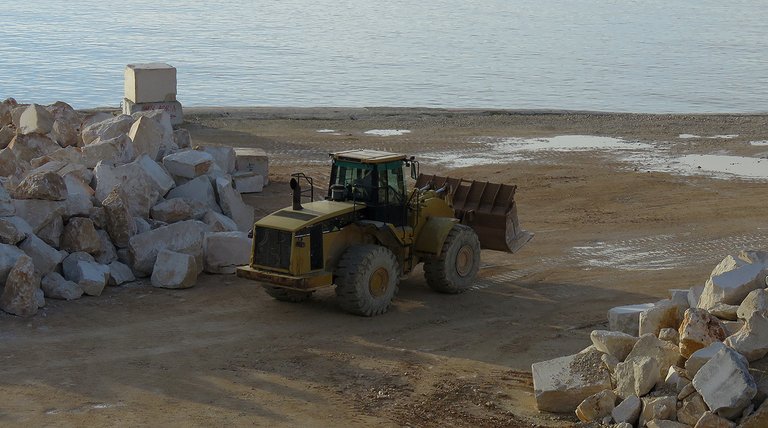
I took this shot while standing on the rocky terrain about fifty meters uphill from the harbor, more or less halfway between the fortress and the sea.
A pretty large construction site was active near the small makeshift harbor.
It looks that the place will be, at least partially, soon turned into a bigger and more solid marina.

For now, the construction site is divided by a line of massive stones from the rest.
From that elevated point above the harbor, I was also able to take a good look at the distant breakwater built as a continuation of the peninsula across the bay.
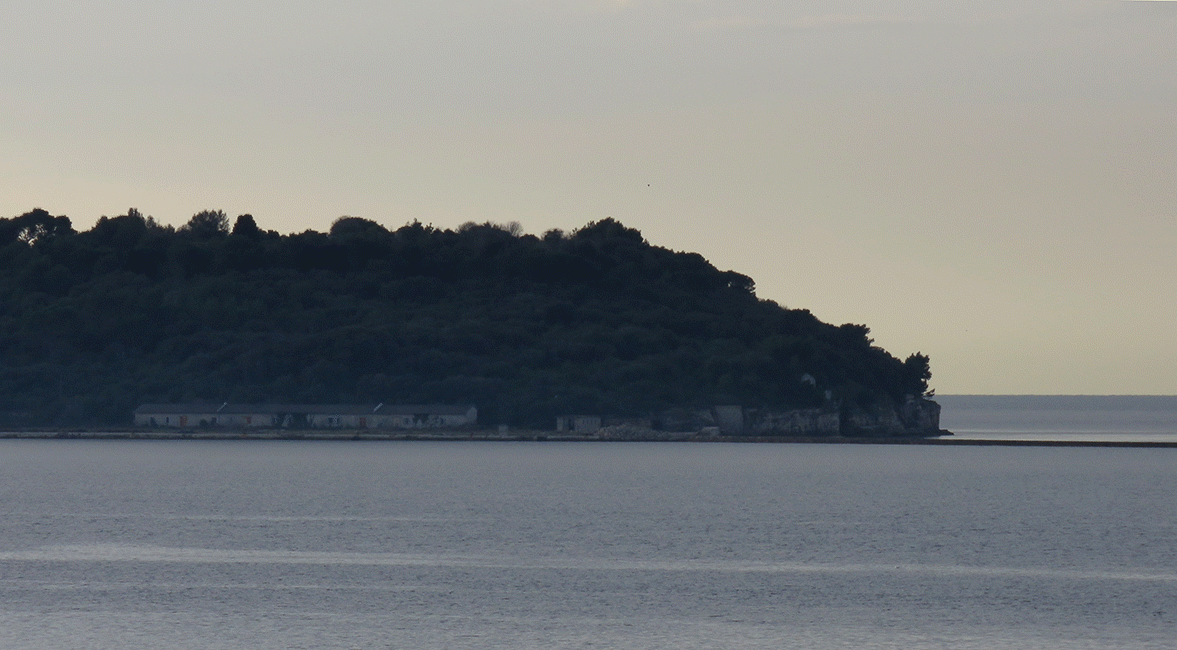
It's a pretty impressive old breakwater. Only seven meters wide, but a little more than a kilometer long. The depth of the rocky seabed on which the embankment was created varies from twenty to thirty-six meters. The thing was built between 1910 and 1914, during the administration of the Austro-Hungarian Empire. The animated GIF above can better render the size and proportions than the still images.

On my way uphill, before reaching the fort ...
... I came across an interesting ruin ...
... covered with many artworks ...
... both inside ...
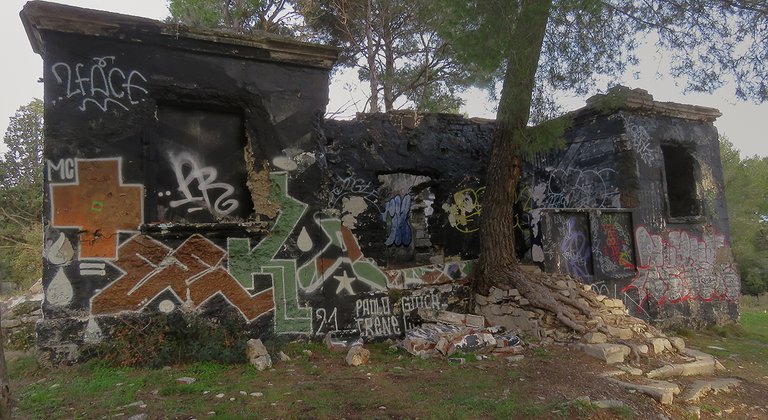
... and outside.
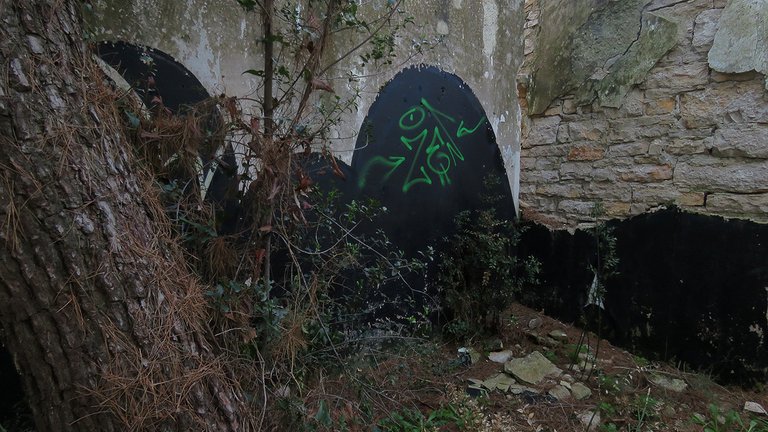
Big trees are growing in some rooms ...
... and that, combined with the graffiti gives the place a unique, slightly surreal atmosphere.
I haven't found any information about this ruin.
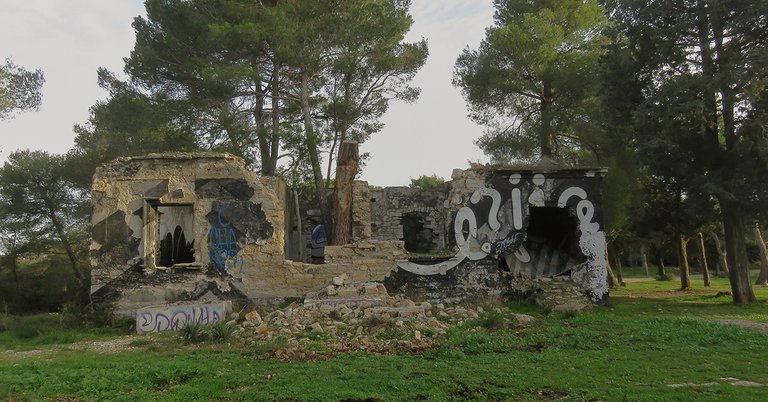
Since the tall pine trees had time to grow in its interior...
... the building is obviously pretty old.
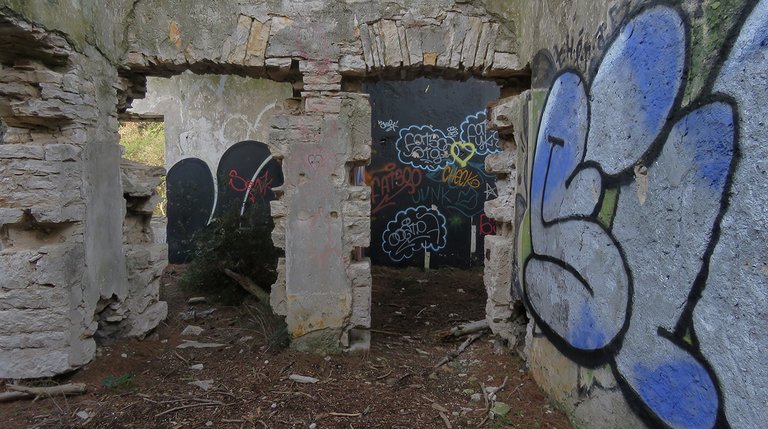
But how old exactly?
I don't know.
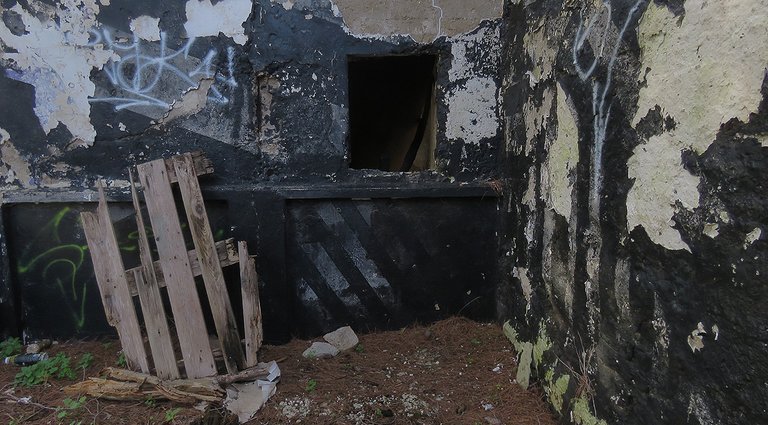
Here you can see the small window in the wall near what was once the main entrance. In the following photograph ...

... you can admire the stuff I saw when I took a look through that window.
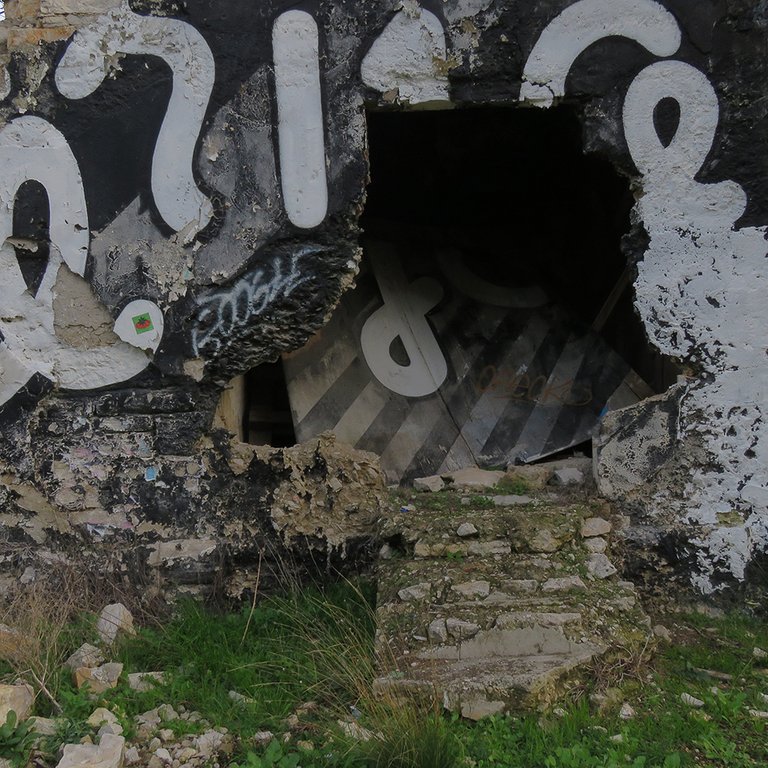
This is the same little room photographed from the other side.
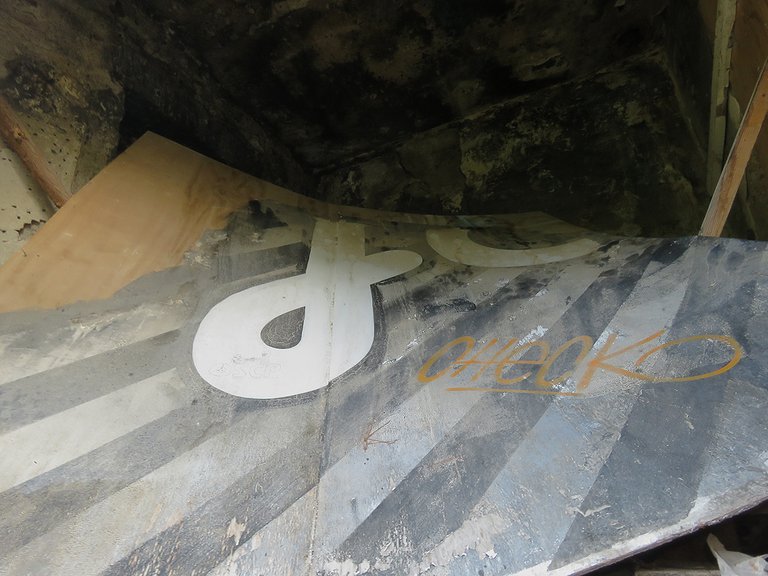
I came closer in this photograph.
The stones that once formed the stairs that led to the main entrance are now caught by the roots of the tall pine that grows in that place. The roots look like the tentacles of a mysterious monster.
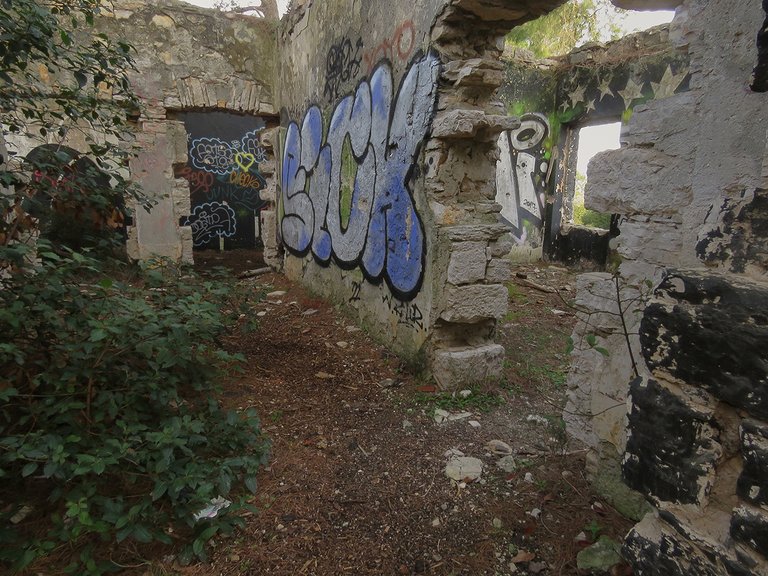
I had plenty of fun exploring the ruin and its street art ...
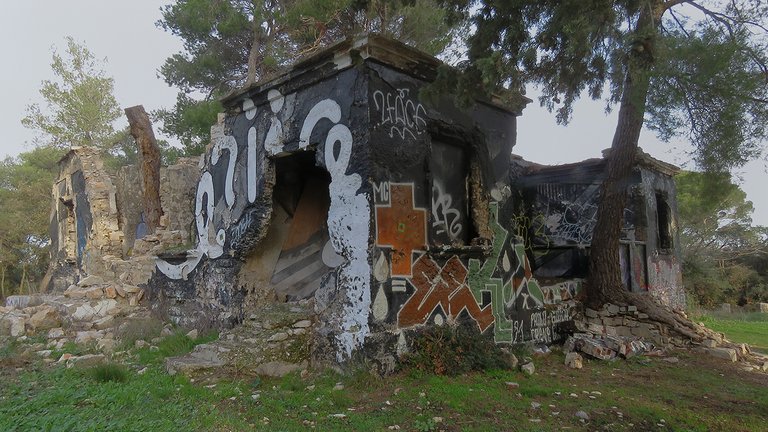
... but after this pretty long series of photographs of the same building ...

... I think that is time to leave and focus on something else.

The old fortress, for example ...
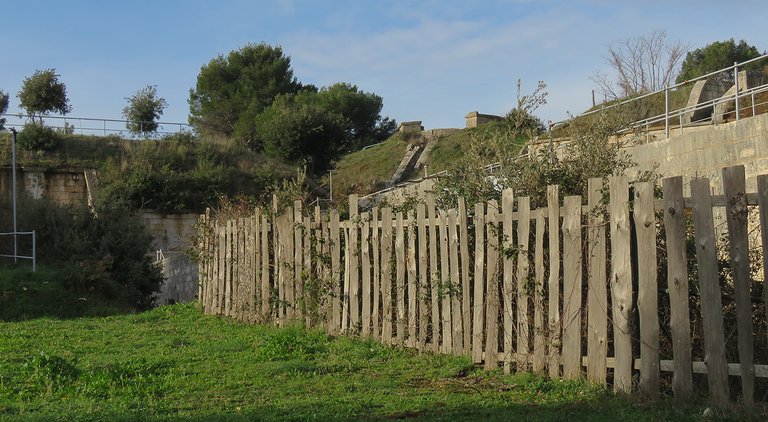
... and the lawn around it.
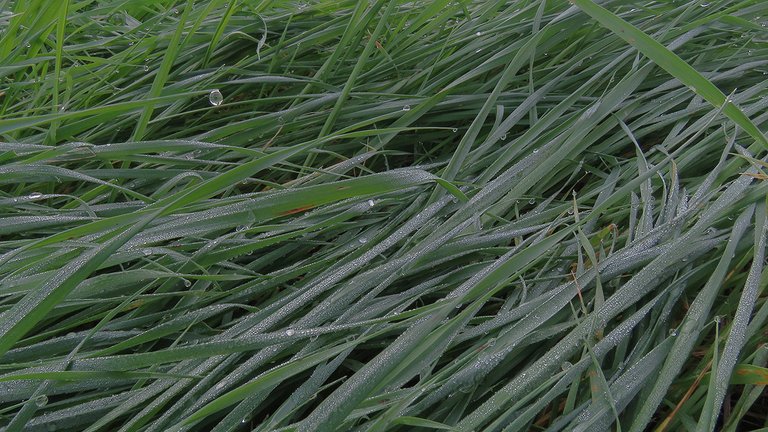
The previous night was very humid so the grass in the shade of the trees was covered with dew.
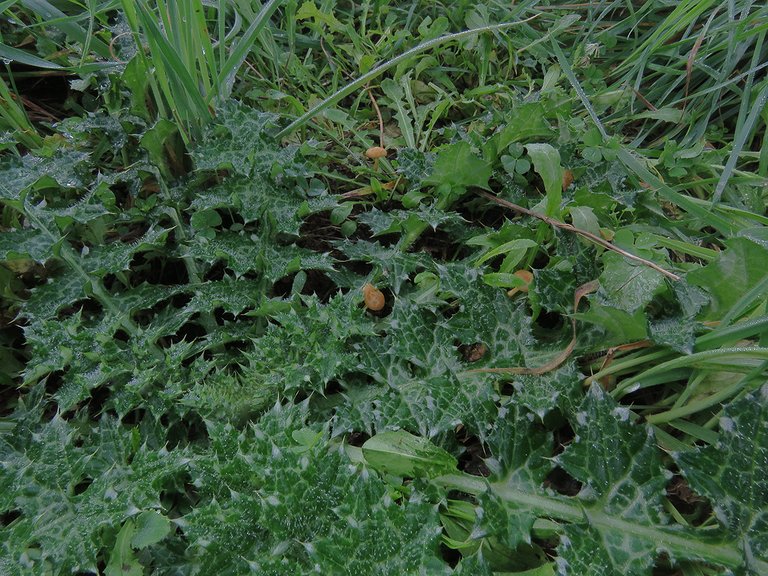
When I took a better look at one of the Sonchus oleraceus plants on that lawn not far from the main entrance of the fort ...
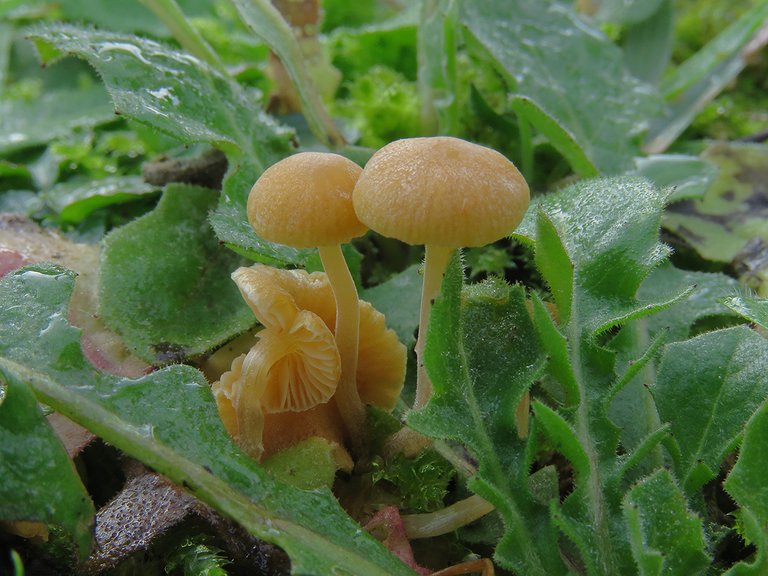
... I noticed some lovely mushrooms among and near its large thorny leaves.
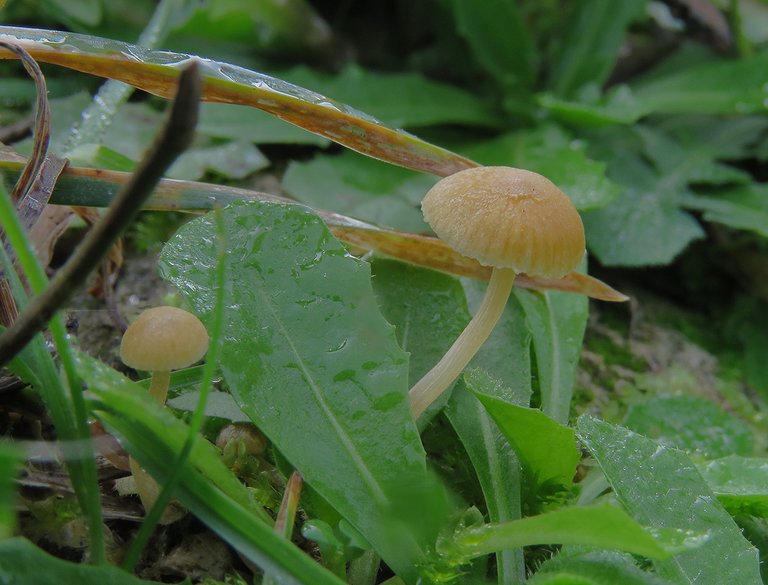
They were pretty small ...
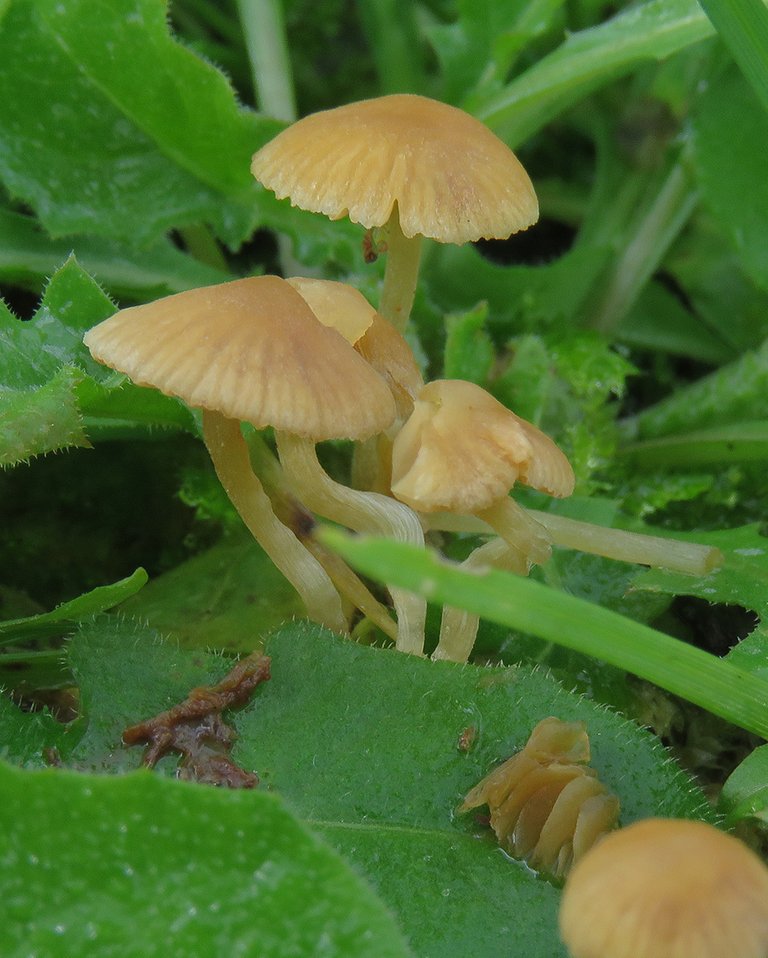
... and fragile.
I also found one considerably bigger mushroom among them. It wasn't really big, but compared to those small yellow ones I showed you in the previous photographs, this fruiting body looked like a pretty large cocktail parasol.

I'm not confident enough to tell you the name of the species, but I'm pretty sure that this is a mushroom from the genus Entoloma in the Entolomataceae family.
The Entoloma vernum, maybe. I don't know. Maybe.
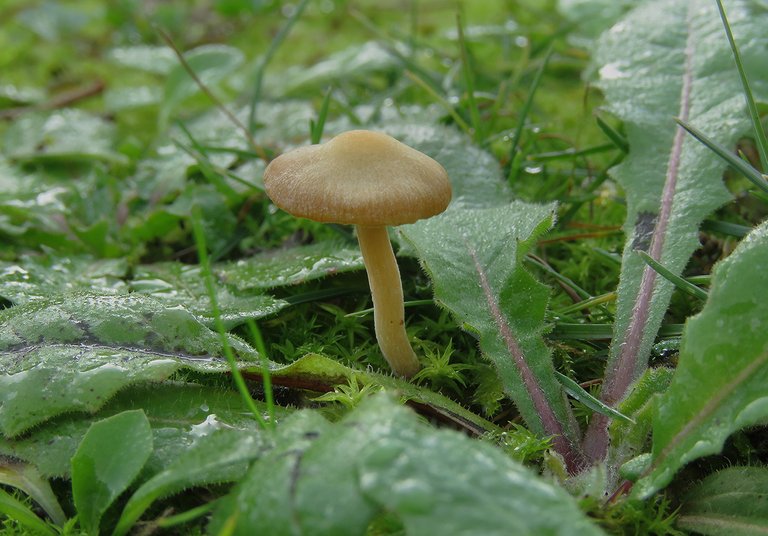
When it comes to the small yellow ones ...
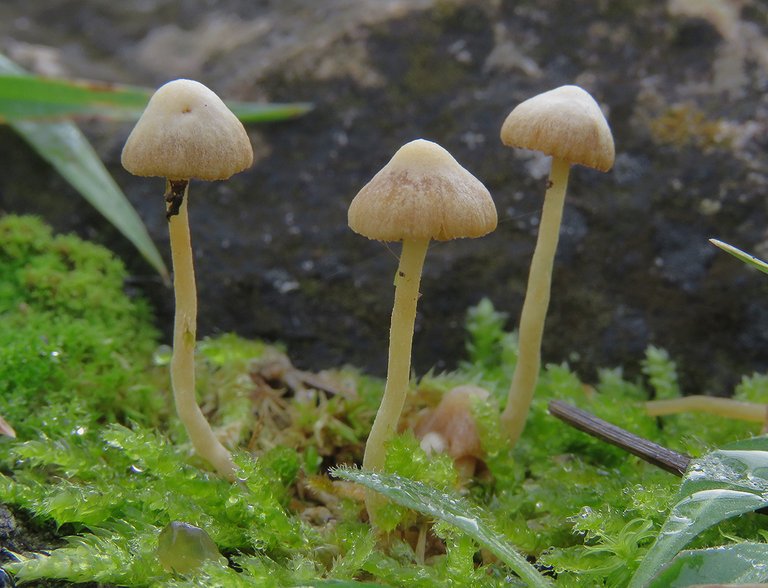
... there is nothing I can say for sure about them.
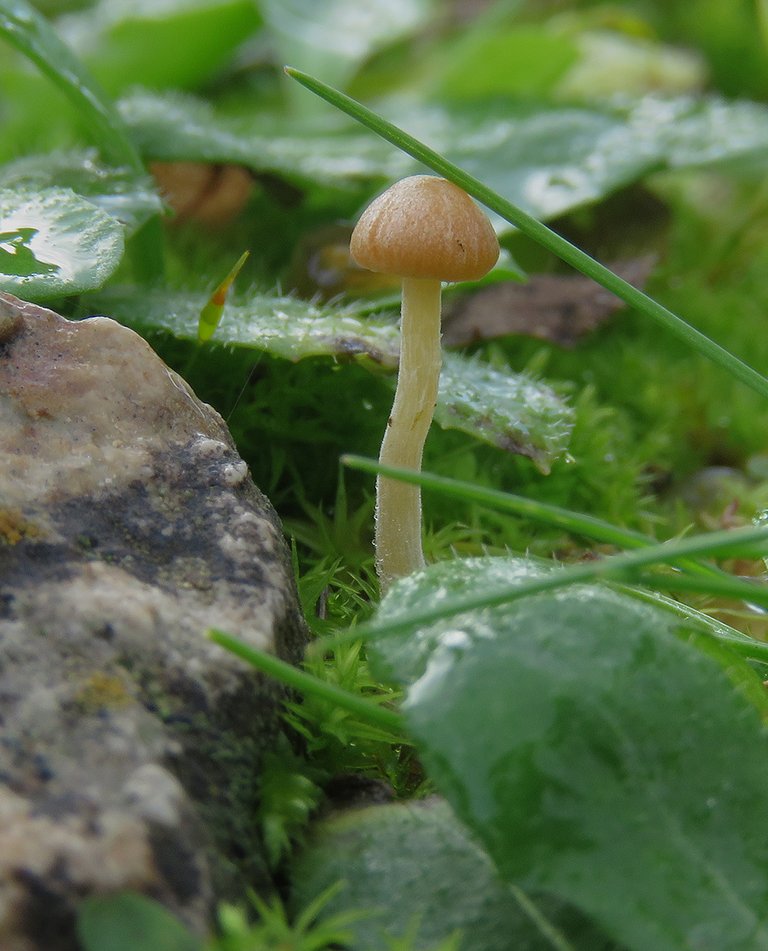
So I won't talk.
I mean, I'll say only that this lovely trio in the little moss garden surrounded by stones was especially photogenic ...
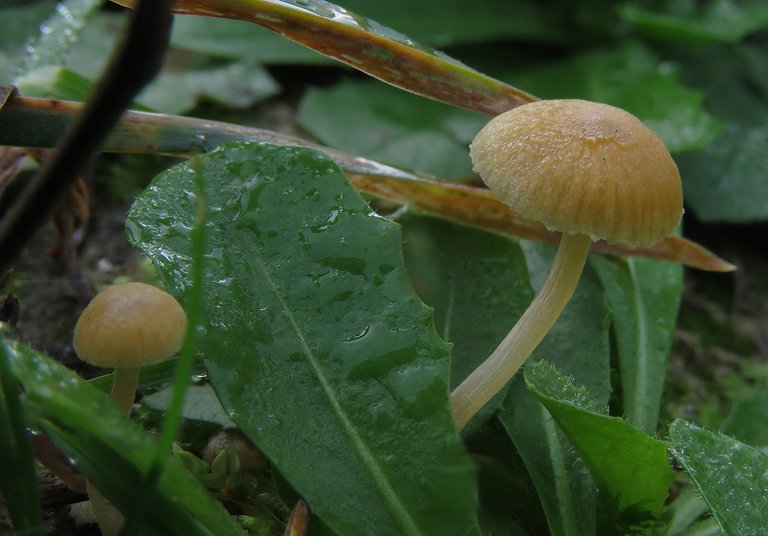
... and that I had a lot of fun photographing the mushrooms ...
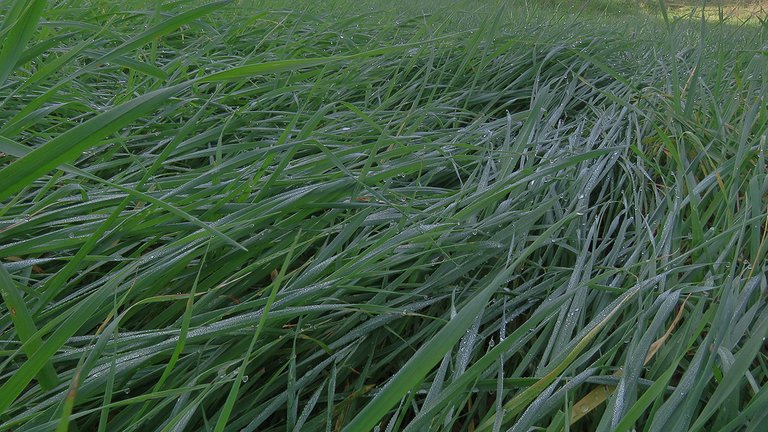
... while sitting on the uncomfortably humid lawn.
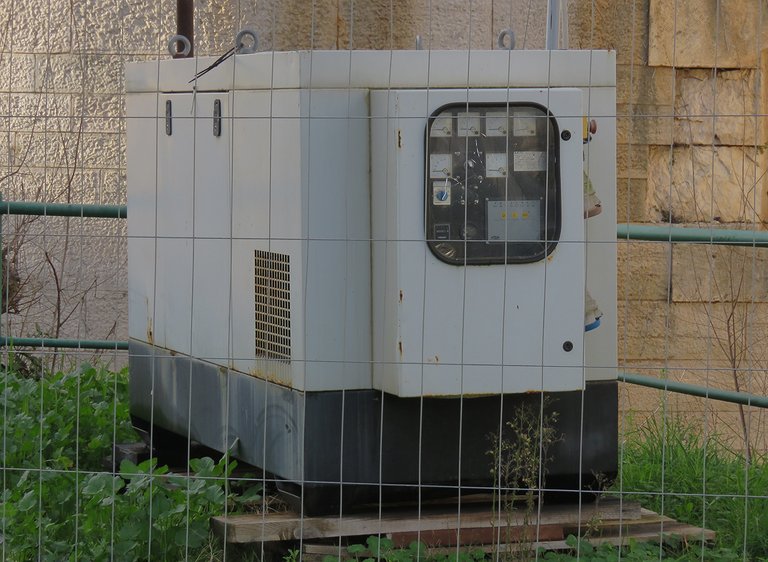
A bit further on the lawn, surrounded by the fence like a zoo animal, there was this machine that has something to do with the electric power, I think.
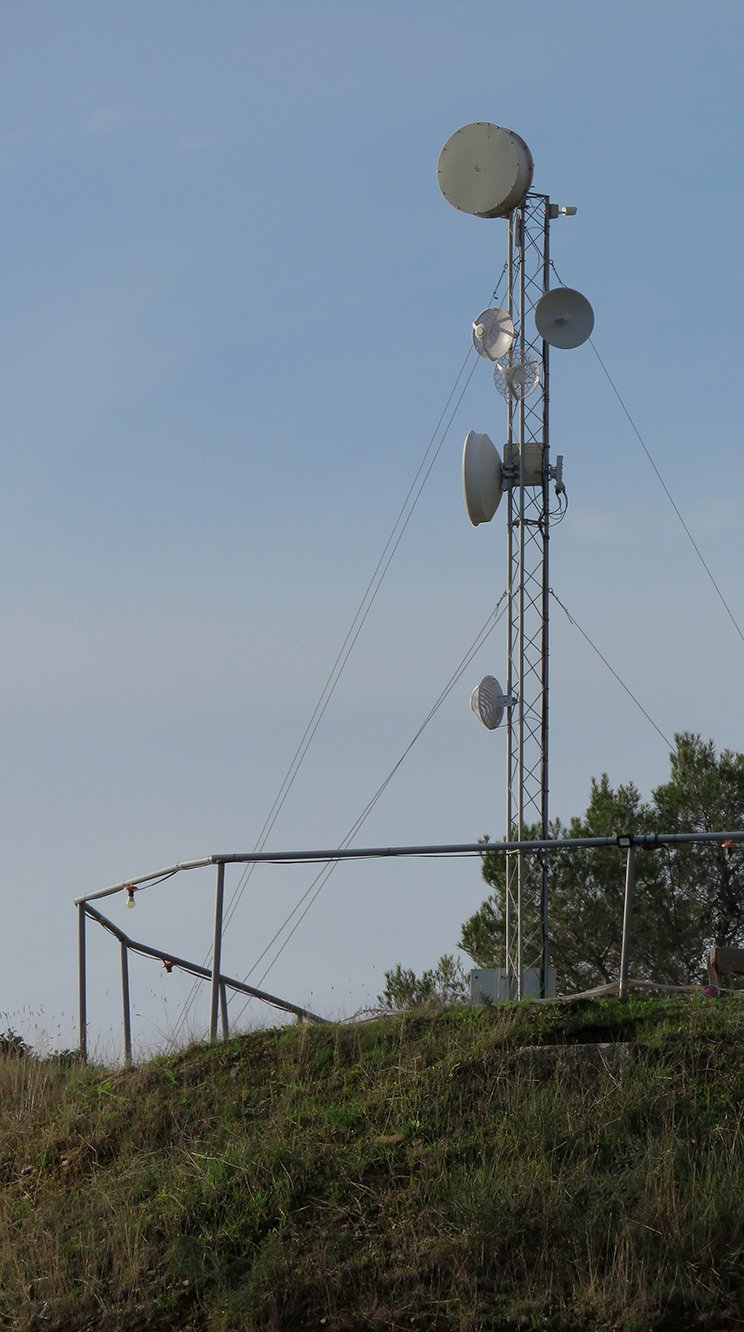
These satellite dishes look fairly cool too. I mean, they look like satellite dishes to me but I'm not completely sure that that's what they are.
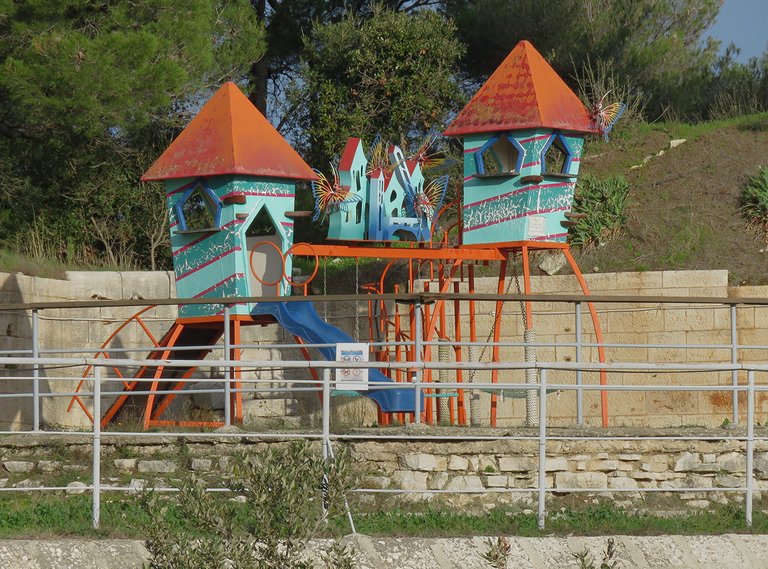
Here you can see some colorful stuff made for children.
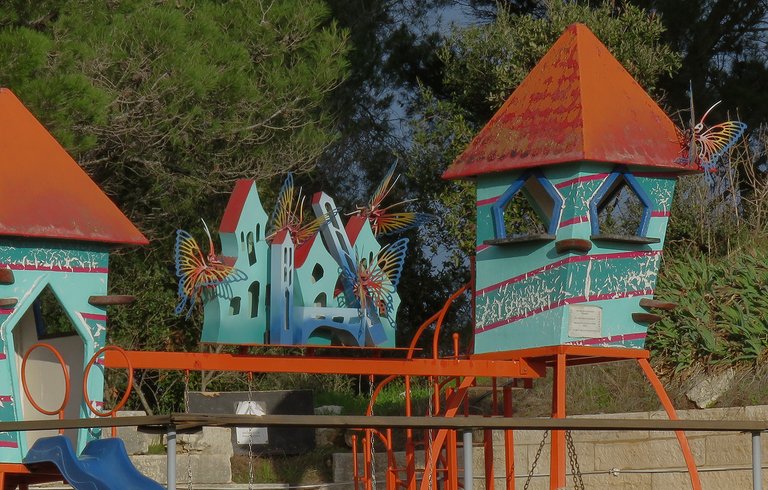
The butterflies are pretty large and have a very exotic look. Can't tell you the name of the species.
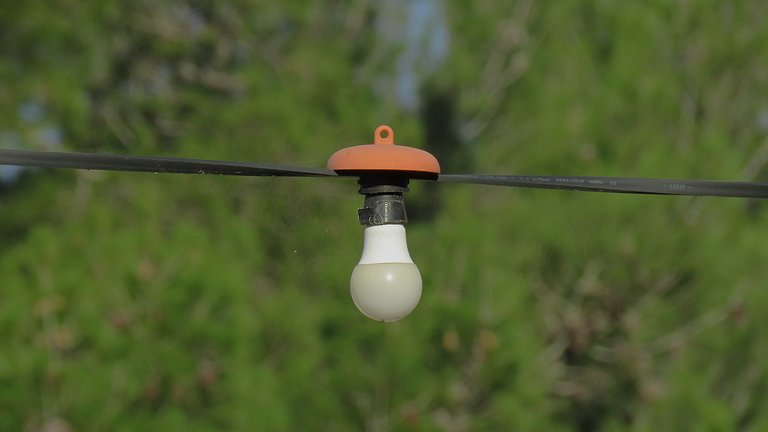
The lamp above that kids' corner is also kinda cool. With the following photograph ...
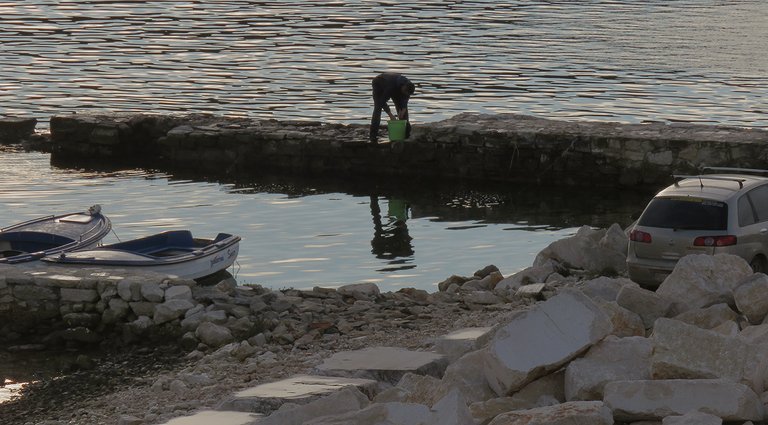
... I'm in the harbor again.
Here, beside the friend who was there with me, you can also see the interesting exposed roots ...
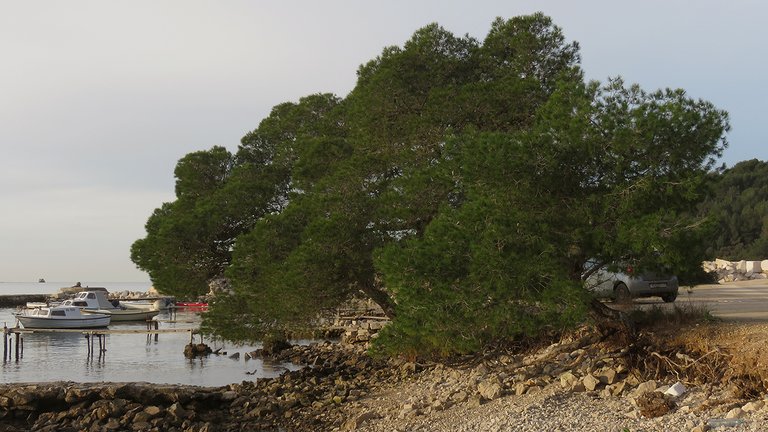
... of the old pine that has grown very close to the sea.

While exploring the stretch of the intertidal zone under the branches of the tree, I found a rounded stone that caught my attention because it stand out from the surrounding stones.
Furthermore, that little sphere in combination with two flat stones around it formed a shape that looked like a stylized sailing boat. I didn't recognize this accidental sculpture immediately, only after a minute or two of staring at the ground before my feet did I notice the thing. In the left photograph of this diptych, I accentuated the sailing boat by colorizing its elements in Photoshop.
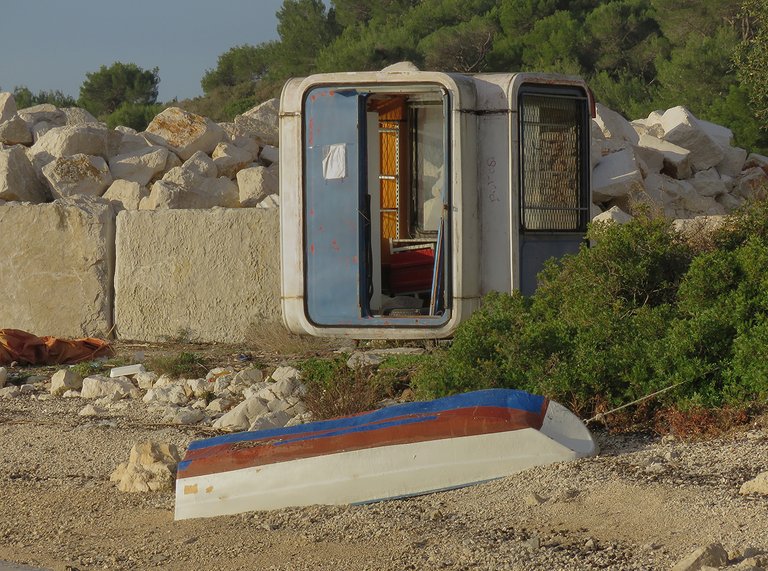
Here you can see a small boat, stranded and overturned on the shore, and the old rusted booth of the type that could be seen everywhere in the area during the eighties.
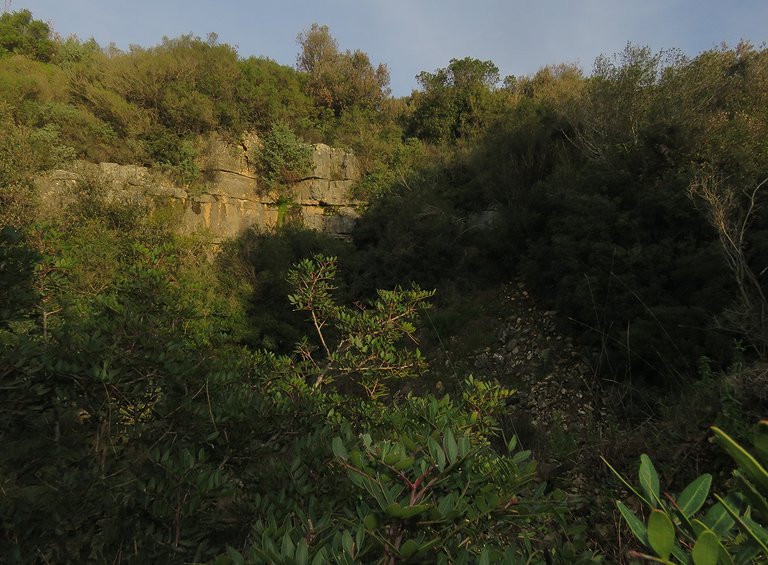
This is the scenery across the road. A rocky terrain covered with a nice variety of Mediterranean shrubs.
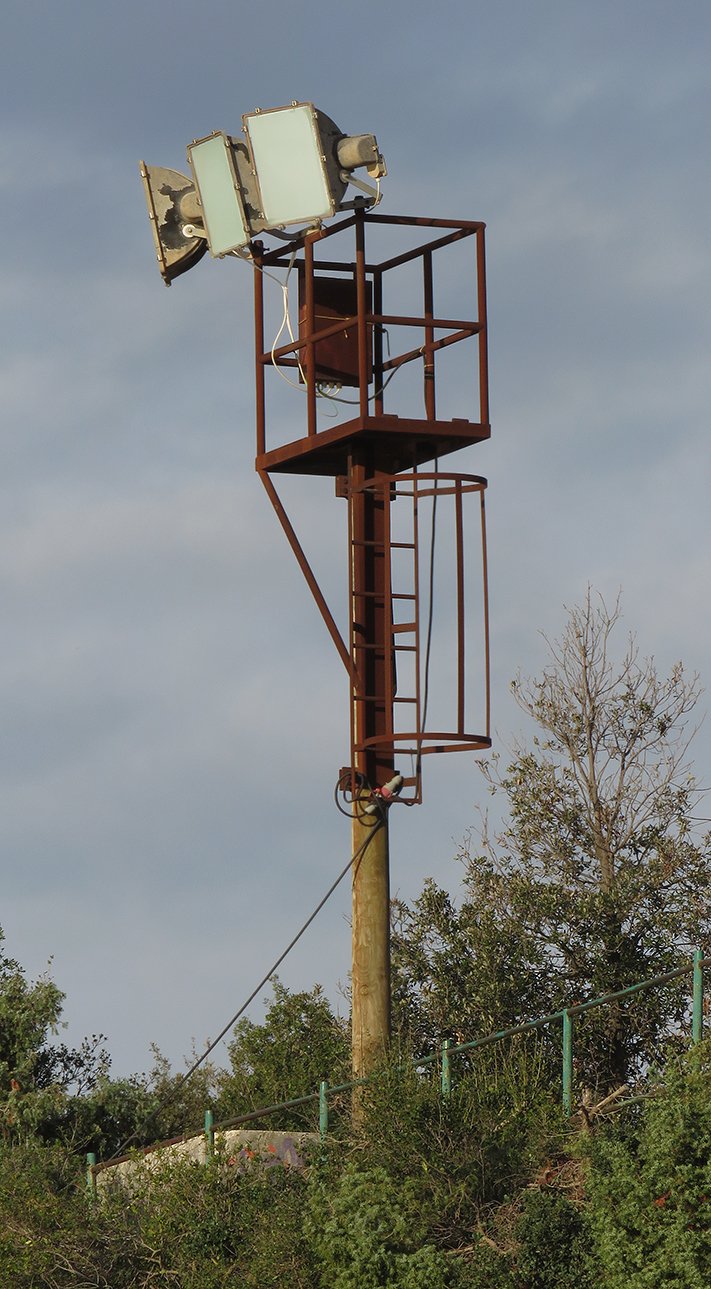
In this photograph, you can see three strong lamps mounted on the rusted pole. They are probably here to light the construction site.
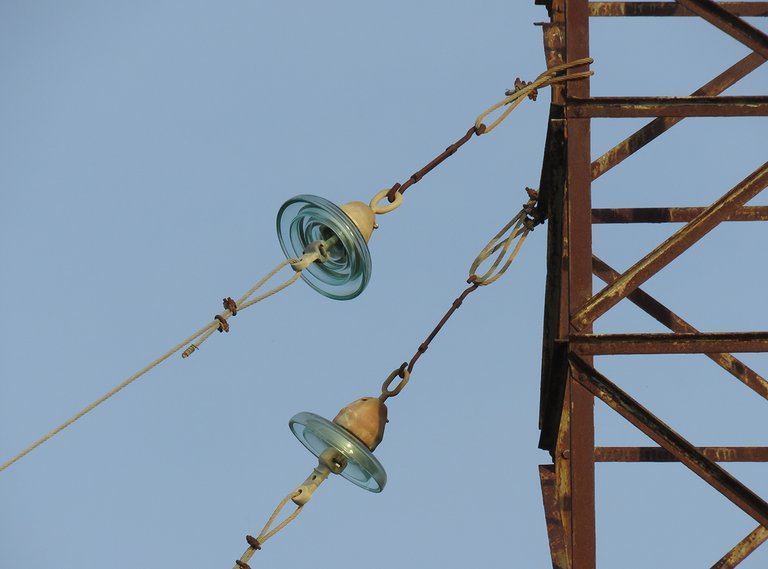
Here I zoomed in to take a better look at some other electricity-related stuff.
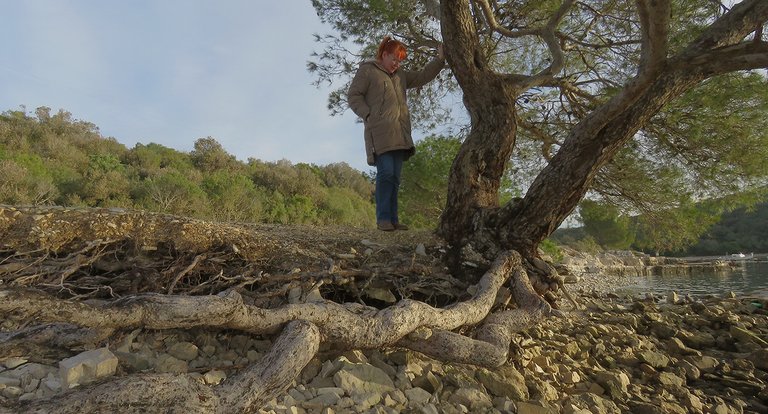
Here you can take one last look at the coastal pine and its exposed roots before leaving the shore.
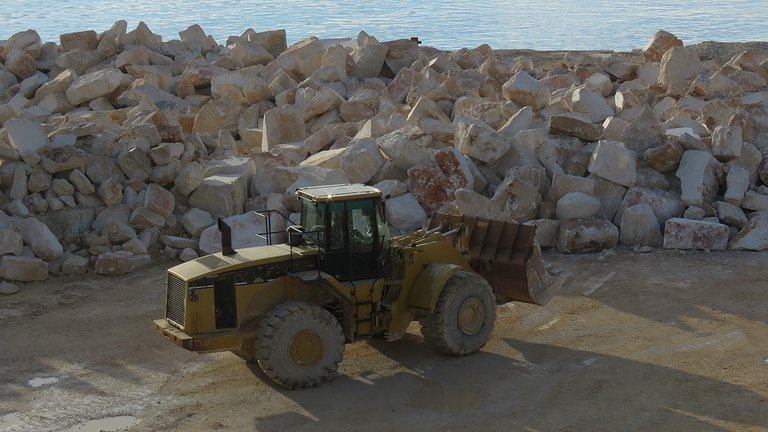
On the way back to the fort, I would like to stop again more or less halfway there ...
... for a second or two, and watch the bulldozer slowly shape the future of the harbor.
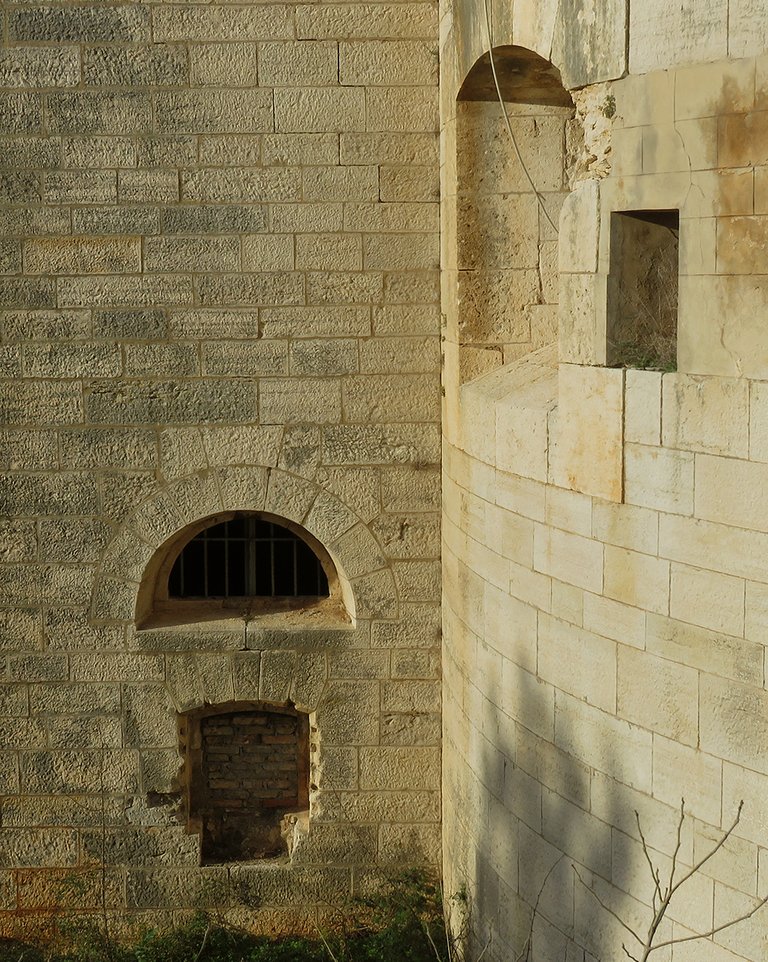
I photographed a couple of windows and a few holes in the wall while walking near the outer wall of the fortress.
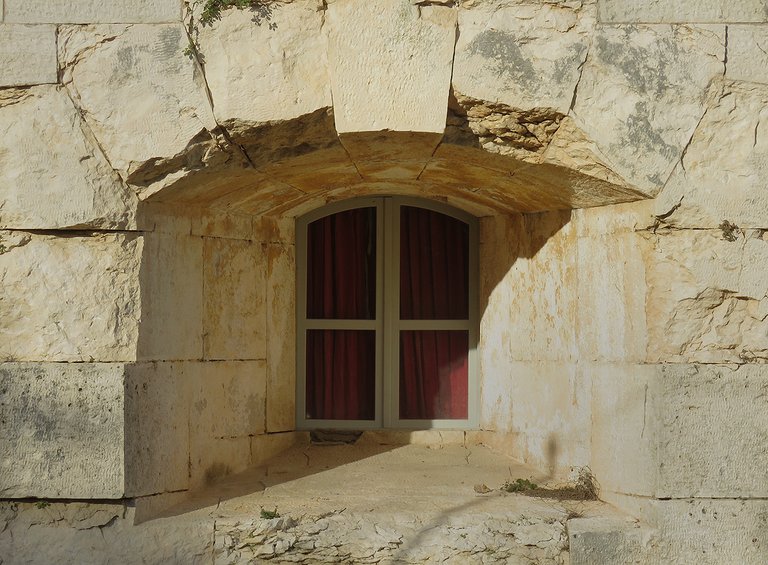
Each window and each hole was unique.
This window, for example, has red curtains behind the glass.

In this one, the curtains are green. This combination of colors reminded me of traffic lights. For a moment, I was almost convinced that those windows are signaling something to me.
Here you can see a square hole with just two rusted bars and a bit of vegetation in it. The bars form a cross. In the following photograph ...
... I zoomed in on the scene so you can take a better look at the Parietaria judaica plant that grows in the crevices between the stones.
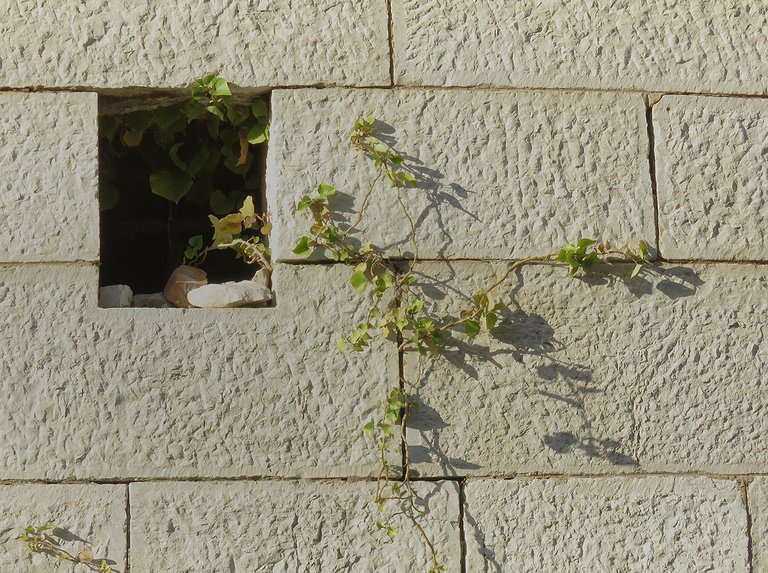
The hole shown in this photograph is decorated with ivy.
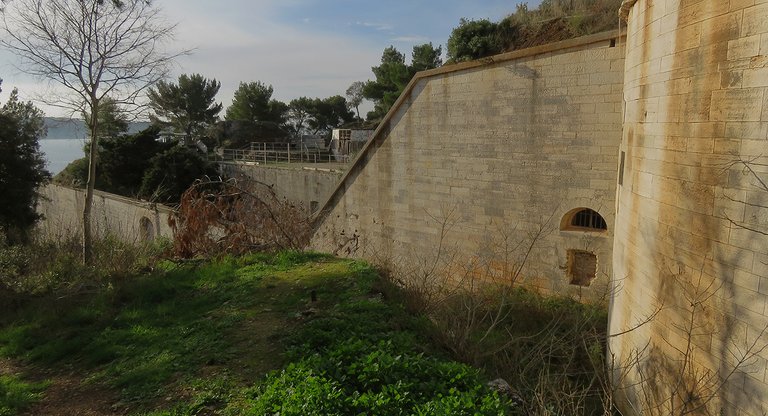
AND THAT'S IT. HOPE YOU ENJOYED THE TOUR. AS ALWAYS HERE ON HIVE, THE PHOTOGRAPHS ARE MY WORK.
